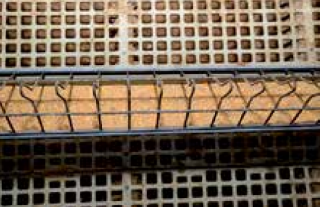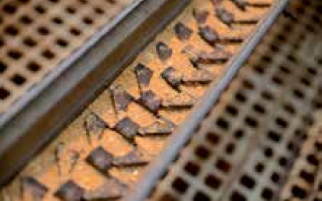Beyond the Breed: Troubleshooting hen performance
By Jeff Steed
From time to time we all experience egg production issues that may or may not be explained. Often the breed takes the blame when it might well be a mechanical issue on the farm.
Even though primary breeders have continued to select for breeder traits such as egg production and fertility, they have also put more emphasis on improving broiler traits such as livability, feed conversion, average daily weight gain and yield which can sometimes make it harder, but not impossible, to achieve the desired egg production.
The breeders have the same traits as their broiler offspring in improved feed conversion, better weight gain, higher breast meat yields and even higher water consumption and we must be prepared to meet these needs.
In this article we will assume that the pullets were reared to the desired weights and uniformity, so why is it that some flocks simply don’t perform well? Getting the flock started off correctly from trans fer to the hen house to the onset of lay (24 to 26 weeks) is one of the most critical times in the hen’s life and this will ultimately determine how well the flock performs overall.
There are three crucial areas to consider when troubleshooting:
House Preparation
The question that must be asked is, “Are the houses completely ready for the birds?” Sometimes due to scheduling issues some of the smaller details left undone initially but later corrected end up contributing to egg production problems later on. Ultimately, whether the house is relatively new or 25 years old, it needs to be as close as possible to ‘Like New Condition’ for each and every flock.
House Preparation Checklist
• Change, and/or check water filters and pressure regulators • Flush and clean water lines
• Clean nest pads and boxes and replacing worn pads and belts
• Check light intensity and replace any nonfunctioning lightbulbs • Repair and replace broken slats • Check fan bearings and tighten belts • Check feeders and fill system replace belts, repair feeders and grill • Check scales for accuracy These are only a few examples in the house preparation routine. Many other things need to be addressed but most of all
remember that the house needs to resemble ‘Like New Conditions’ for each flock.
Feeder/Feed Distribution
Today’s breeders consume feed very fast, and feed clean-up times can be short from 21 to 24 weeks (<45 mins) due to low feed allotments and the increasing appetite of the birds through breeder selection. The birds must gain the proper weight from week to week as well as show improvement in uniformity and CV’s to ensure a good peak; we never want to see stalls in weight or loss of uniformity or CV during the onset of lay.
Feed must be delivered around the house evenly so all birds have an equal chance. This may require increasing chain feeder speed or if using pan feeders this will require higher speed transmission on the feeder line, but also remember to look at the fill system to ensure it can keep up with the feed delivery.
If the feed delivery system can’t keep up with the feeder, this can cause skips in the chain feeder or if using a pan feeder can cause pans to be missed during feeding. It is always good practice to feed the first round of feed in the dark on chain feeder or 1 cycle on pan feeder before house lights are turned on to help with feed distribution. Remember that missed or inconsistent feeding can cause unpredictable egg production for the entire life of the flock.
Feed Distribution Check List:
• Feed system needs to be in ‘Like New Condition’ each day
• Feeder needs to be run with as little off time as possible, never letting feeder get empty when multiple cycles are needed
• Know your feeder speeds, and feed clean-up times
• Be there at feed time, remembering no feed – no eggs Remember, too, that feed distribution for the males is just as important; inconsistent distribution can cause mortality and fertility problems.
Chain Covered:

Chain not covered:

Water Quality and Volume
The need for fresh clean water, and enough available water volume, is essential for good egg production. Water makes up approximately 70 percent of the egg and if the water needs are not met it can adversely affect egg production.
Water requirements for the birds have increased over the last 15 years and it is essential the birds get the water when they need it. The birds should be consuming no less than 45 percent of their daily amount of water by noon. There is a big difference in birds consuming enough water in a 24-hour period against getting enough water when they need it.
If the water is restricted due to lack of pressure or volume issues such as increased feed clean-up times will occur and there may be a higher percentage of slat eggs due to hens riding the drinker waiting for water to satisfy their needs. Low water consumption is typically the result of a mechanical issue such as low volume (well source), improper plumbing (pipe size), improper drinker settings (set too low) and even stray voltage (improper groundings).
Check List for Water Management
- Keep a record of daily water consumption to identify any change
- Monitor and change water filter
- Know make-up of water source (periodically sampling for impurities and bacteria)
- Monitor drinkers for stray voltage
- Drinker height should not be too high or too low
- Monitor cc (or ml) delivered from nipple drinkers
As previously stated, the bird’s greater water requirements today need to be met. Total daily water consumption can be as high as 10 gallons /100 birds (45 liters / 100 birds) depending on time of the year and environmental conditions.
Most new housing specifications require a 2 inch (50 mm) water line from the water source to the house before stepping down to 1 inch (25 mm) line inside the house to the drinker line. Older housing needs to be reviewed to ensure the water volume will meet the needs of today’s birds. Most housing built pre-2000 were plumbed with 3⁄4 inch (20 mm) piping and may experience issues with water volume, especially if the farm has multiple houses.
All three areas that have been discussed are very important and should always be considered when low or unexpected production issues arise. However, nothing is more important than having enough available water when the birds need it.
Water consumption hourly
| Day | Time | Water | Feed |
| 49 | 5:00 | 0 | 0 |
| 49 | 6:00 | 3 | 0 |
| 49 | 7:00 | 51 | 0 |
| 49 | 8:00 | 103 | 0 |
| 49 | 9:00 | 103 | 0 |
| 49 | 10:00 | 84 | 0 |
| 49 | 11:00 | 66 | 0 |
| 49 | 12:00 | 68 | 0 |
| 49 | 13:00 | 64 | 0 |
| 49 | 14:00 | 60 | 0 |
Water consumption daily
| Day | Total Drink daily (%) | Water-1 daily (%) | ||
| 42 | 1,104 | -4 | 1,104 | -4 |
| 43 | 1,059 | -5 | 1,059 | -5 |
| 44 | 1,059 | -3 | 1,029 | -3 |
| 45 | 1,009 | -2 | 1,009 | -2 |
| 46 | 1,033 | 2 | 1,033 | 2 |
| 47 | 1,090 | 5 | 1,090 | 5 |
| 48 | 1,120 | 2 | 1,120 | 2 |
| 49 | 1,080 | -4 | 1,080 | -4 |
| 50 | 1,098 | 1 | 1,098 | 1 |
| 51 | 322 | -71 | 322 | -71 |
